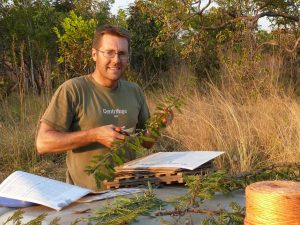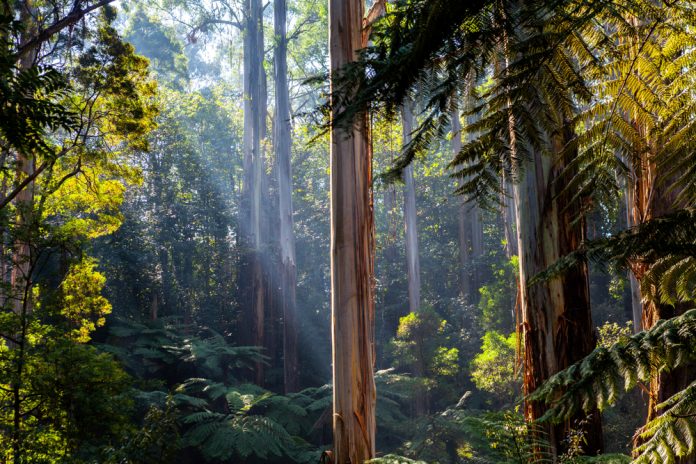Adventurous Sunshine Coast conservation scientist Professor Andy Marshall has gone out on a limb to help solve the question: how many tree species exist in the world?
While crawling through thorny vines or trekking remote forests in storms, he’s also helped unearth amazing new species, including a ‘hot spot’ of yet-to-be discovered trees in northeast Australia.
Professor Marshall, from the University of the Sunshine Coast (USC) Forest Research Institute, and almost 150 scientists spent years identifying trees both common and rare around the world.
The answer to the question — about 73,000 species — was published this week in US science journal PNAS.
“It’s hugely exciting,” said Professor Marshall, who did most of his fieldwork in East Africa and Australia before analysing the data at USC over the past five years.
“This new global dataset is a significant piece of the puzzle in ecology and biodiversity. It’s based on the identification of trees growing in millions of vegetation plots around the world.”

About 9,000 of the 73,000 estimated species are yet to be discovered and will need names and scientific descriptions.
According to the research, led by Roberto Cazzolla Gatti of Purdue University and the Global Forest Biodiversity Initiative, “these findings highlight the vulnerability of global forest biodiversity to anthropogenic changes in land use and climate, which disproportionately threaten rare species and global tree richness.”
Almost 6,700 known tree species and 1,500 undiscovered species were estimated in Oceania, including Australia. The research found a ‘hot spot’ of likely undiscovered species in the tropical and subtropical moist forests of northeast Australia and the Pacific Islands.
Receive the day’s local news direct to your inbox by subscribing to SCN’s FREE daily news feed. All it requires is your name and email. See SUBSCRIBE at the top of this article
Professor Marshall said estimating the planet’s total number of tree species helped show how many different ecosystems existed and gauge the health of those systems.
“The better the information, the better we can inform national and international plans for conservation priorities and biodiversity targets and management – potentially saving endangered tree species in the process,” he said.
“This publication also recognises that identifying trees in the middle of nowhere can be really hard work, starting with collecting materials such as flowers that may only bloom briefly and seasonally, then following individual identification processes that can take years.”
He is continuing the tree identification research this year with PhD students from USC in Australia and Tanzania and with his charity, Reforest Africa.

“In Queensland, we’ll be working on setting up new vegetation plots from Cape York in the north to Lamington in the south, including the Sunshine Coast, to add to existing research plots across the Cassowary Coast and Atherton Tablelands,” he said.
Professor Marshall, who started researching trees in 1998 in Tanzania, said his recent highlights were discovering two new African tree species from the custard apple family.
“One of them, the Mischogyne iddi, is a flowering tree that grows up to 20 metres tall up in the mountains. We named it after a Tanzanian botanist. He was stoked!”
Professor Marshall is also researching a cost-benefit analysis, based on the newly published data, to help governments set priorities on native forest restoration.
PNAS is The Proceedings of the National Academy of Sciences of the United States of America.





